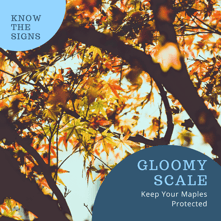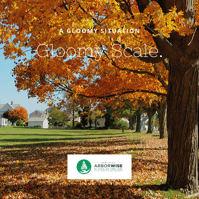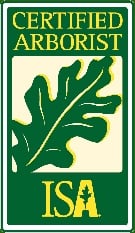
Maple trees are commonly found across North Carolina. If your maples are looking a little less than spectacular, it is likely caused by an insect called Gloomy Scale.
Gloomy Scale is an armored “scale insect” that attaches itself to the bark and sucks out nutrients, water, and sugars from the tree. In heavy infestations the tree will suffer from a lack of nutrition. This causes discolored leaves, cracking of the bark, weak and improper growth patterns and branch dieback. In many cases the tree can die if not treated.
How to Identify Scale on Maples
- Take a look at the bark. Maple bark should be a medium gray to almost silver and smooth.
- Scale infestations darken the bark color to almost black in some cases. The trunks and branch unions are usually the worst as multiple generations of the insect pile on top of each other.
- Up close the individual insect appears to be a small oval bump or “scale” on the bark about 1-2mm long.

Scale Treatment
- Dormant oils are sprayed on ornamental plants in the late fall, winter, and early spring to control overwintering eggs of different pest species. Certified Arborist, Rick Pearce states, "dormant oils work by covering the plants and the insect eggs in a thin film of oil stopping further insect production."
- Systemic insecticide is the recommended treatment type in warmer months after leaf break. This treatment is applied to soil and lower trunk and can dramatically improve health and longevity of your maple tree.
- A deep root fertilizer treatment can repair any nutrients lost due to a scale infestation.
If your maples are looking rather gloomy and showing signs of scale, our Certified Arborists are trained to determine the best course of treatment for your maple trees. Don't wait! Schedule your free consultation today.








